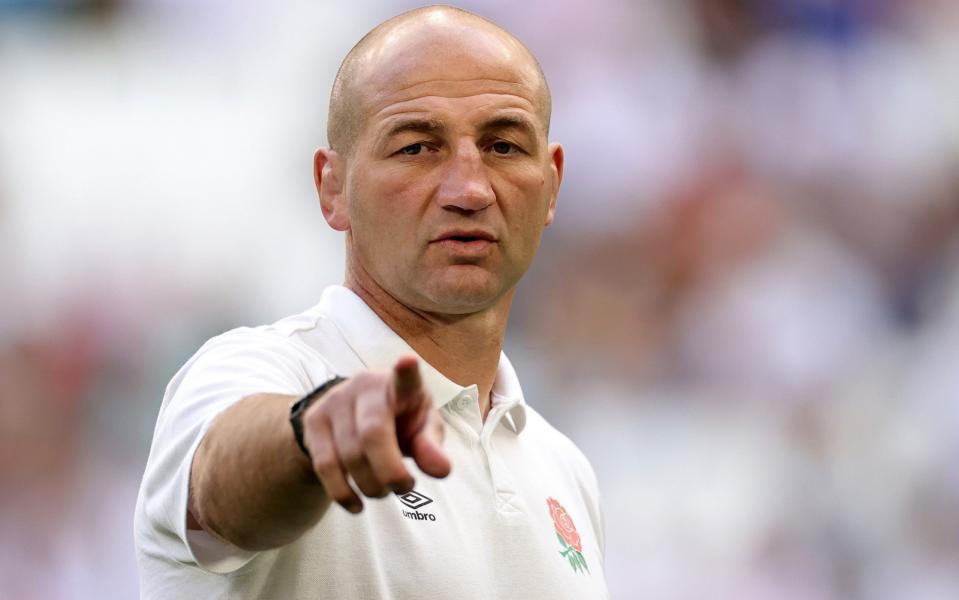Combative Ethan Roots could balance England’s pack – and unleash Ben Earl

Steve Borthwick’s mention of Ethan Roots during his Twickenham press call on Jan 4 was clearly deliberate. England’s head coach was asked the open question of who had put their hand up for England selection ahead of the Six Nations. Roots’s name was one of the first to be volunteered. Rob Baxter is just as deliberate about how he configures a back row. Over recent years, his formula has been to deploy a lighter, quicker athlete at the base of the scrum between two bruising boppers offering ballast. This approach appears to have survived the great exodus from Sandy Park, which necessitated a squad revamp.
It is the highest possible compliment to Roots since his arrival from Ospreys that Exeter have not missed Dave Ewers, a mighty player for Chiefs who started both domestic and Champions Cup finals in 2020 when the Devonians did a special double.
Ewers moved to Ulster last summer. Many believe him unlucky to remain uncapped, despite featuring for England Saxons some seven years ago as part of an eclectic cast list including Maro Itoje, Henry Slade and Sam Burgess. Among the factors that will have counted against Ewers’ international inclusion were the importance of Billy Vunipola and the need to balance a back row around the Saracen, usually by picking a flanker capable of jumping in the line-out. Hold that thought.
Roots, 26 and eligible for England through his Reading-born father, is not quite as destructive as Ewers. The latter, at his best, was a gain-line behemoth. That said, Roots is a combative and willing runner. On Saturday against Glasgow Warriors, he ended up with 33 hard-fought metres from 13 carries. At one goal-line drop-out in the first half, Roots sat in the back-field – the sign of a keynote carrier – before attempting to instigate momentum with a full-blooded charge.
Conspicuous thanks to his mullet and Maori tattoos, he is also a resourceful flanker who is busy at the breakdown and jumps at the front of the line-out. The international retirement of Courtney Lawes, a remarkably multifaceted operator, will require England to rebalance the back five of their pack. And here, Ben Earl’s emergence makes things interesting. Because, with delicious irony, Borthwick may take a leaf from Baxter’s book.

Sam Simmonds was another who did not feature in as many Tests as he might have done before leaving Chiefs, with Eddie Jones never seemingly convinced or willing to provide the speedster with complementary infrastructure. For Exeter, Simmonds would almost always have an entourage of four burly colleagues in the back five of Baxter’s pack. Ewers would often be on the blindside while Chiefs used players as hefty as Jannes Kirsten as openside flankers.
Those team-mates covered other bases – namely line-out work, clattering rucks and eking out metres in heavy traffic – so that Simmonds could be more effective. These days, with Greg Fisilau and Ross Vintcent as successors to Simmonds, and Roots and the outstanding Jacques Vermeulen as their hefty henchmen, Exeter maintain the same blend. England are going to have to think in similar terms if Earl remains at number eight.
One option, made more likely by Borthwick’s selection history and the value he places on the line-out, is leaning on a hybrid lock-blindside. Itoje has done it before. George Martin has spent plenty of time in the back row. Ollie Chessum was explicitly cited by Jones as a potential successor to Lawes. Having those three on the pitch at once, regardless of who operates as a No 6, makes England particularly strong in certain areas. Yet it is a configuration that would also render the team light on carrying punch in phase-play, especially given that Manu Tuilagi is poised to miss the beginning of the Six Nations and Borthwick will surely need to move on from him anyway. With it, England would probably need to kick as much as they did at the World Cup.

Sam Underhill, Ben Curry and Guy Pepper seem to be viewed as out-and-out opensides. Lewis Ludlam, a wholehearted Mr Fixit at blindside for England in the past, has been frustrated by injury. Tom Pearson’s hat-trick for Northampton Saints on Friday night, albeit against a papier-mâché Bayonne, provided a timely reminder of his potential with ball in hand. Phil Dowson, his director of rugby at Franklin’s Gardens, stressed last week that Pearson is improving as a line-out jumper, too. That would enhance his worth to Borthwick and give him a shot at blindside as well as the openside role. Pearson told Telegraph Sport that he admires Pieter-Steph du Toit, a man Felix Jones knows well from the new England coach’s work with South Africa. James Chisholm of Harlequins also fits the profile of a rambunctious blindside. They are not particularly common on these shores, especially with Ted Hill recovering from hamstring surgery.
Roots, like Fisilau, might not have shifted the England dial too far by virtue of his display on Saturday alone. “I think we’ve got a few guys who are in the mix,” said Baxter after the 19-17 win over Glasgow. “Whether today’s performance levels will help [I don’t know]… [but] the result may. Time will tell.”
Matt Fagerson, the abrasive Scotland international at openside for Warriors, was among the most influential individuals on show. He demonstrated real Test class, forcing two tenacious breakdown turnovers and carrying powerfully. But Roots could easily find himself in the England mix on Wednesday, offering scope to rebalance the World Cup pack. Borthwick would not have mentioned him without seeing serious promise.

 Yahoo Sports
Yahoo Sports 